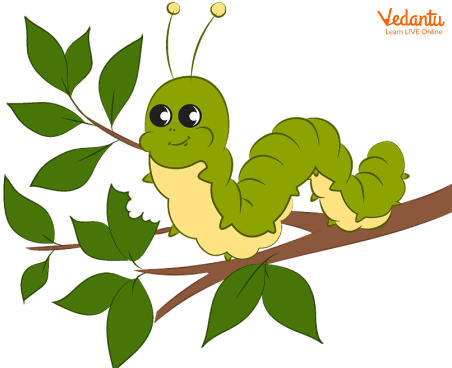Introduction to Caterpillar Poem
In this piece of poetry, the caterpillar is utilised as a metaphor for the lifespan of a human being. Life never remains the same for us, and we get more experience and a drive to learn more about the world as we get older. We stay in the secure care of our parents during our childhoods, just as the young caterpillar feels safe inside its snug cocoon. When we grow up, home becomes a prison for us, and we seek out new experiences in the same way that a caterpillar skitters around in the sunlight fluttering its wings when it transforms into a butterfly.
The Theme of the Caterpillar Poem by Christina Rossetti
"The Caterpillar" by Christina Rossetti is an excellent introductory poem for a youngster to remember and study. It's brief, straightforward, and concrete, but it's full of artistic and literary aspects that even a young student can understand. This poem appeals to the reader because it depicts the difficult existence of a caterpillar. To evade its natural predator, the caterpillar must hide. Birds can consume it as well. Regardless of how perilous its existence was, it eventually transformed into a butterfly.
Brown and furry
Caterpillar in a hurry,
Take your walk
To the shady leaf, or stalk,
Or what not,
Which may be the chosen spot.
No toad spy you,
Hovering bird of prey pass by you;
Spin and die,
To live again a butterfly.

Caterpillar on Branch Eating Leaf
Summary of the Caterpillar Poem
This poem is about the life of a caterpillar.
The caterpillar's exterior is described as "brown and hurry" in the poem. According to the poet, "caterpillar in a hurry" characterises the caterpillar's brief existence. "Spin and die, to live again a butterfly," the caterpillar says before transforming into a butterfly. The caterpillar stops feeding and hangs upside down on a branch or leaf, spinning a silken cocoon or moulting into a gleaming chrysalis. The caterpillar undergoes drastic transformations within its protective coating before emerging as a butterfly or moth. On one level, "Spin and die to live again a butterfly" refers to a caterpillar spinning its cocoon, but it might also relate to a spinster who looks to have wasted her chance on Earth but would be revived triumphantly in the hereafter. The caterpillar says before transforming into a butterfly.
About the Poet
Christina Rossetti was a romantic, religious, and children's poet who lived from 5 December 1830 to 29 December 1894. She was a member of the Pre-Raphaelite Brotherhood and lived in London (of which her brother Dante Gabriel was a founding member). "Goblin Market" and "Remember" are two of Rossetti's most famous works. She also penned the lyrics to "In the Bleak Midwinter," a Christmas classic.


FAQs on "The Caterpillar" by Christina Rossetti
1. Where and why is the caterpillar hurrying?
The caterpillar is hurrying to the stalk of a plant, under a shaded leaf. Christiana, the poet, believes the caterpillar is in a rush to spin itself into a cocoon and be reborn as a butterfly.
2. In the poem Caterpillar, why is the term spin used?
The caterpillar's brief existence is described as "caterpillar in a hurry." "Spin and die, to live again a butterfly," the caterpillar says before transforming into a butterfly. "Spin and die, to live again a butterfly." Here, the spin word describes that the caterpillar is turning into a butterfly.





